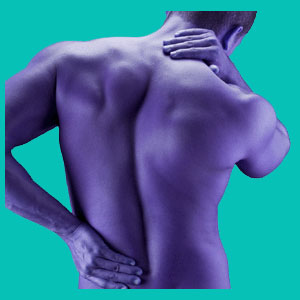
Does scoliosis cause herniated discs? This is a question often asked by patients who demonstrate atypical spinal curvatures and bulging discs that are located near their scoliotic formations. Scoliosis is not an inherently painful or problematic condition, although it can be both given particular circumstances. However, the existence of any type of scoliotic curvature will certainly produce collateral effects on the surrounding spinal anatomy.
Scoliosis remains a much debated topic in the greater dorsalgia treatment sector. This is because many doctors continue to treat it as a definitive “problem”, while other doctors realize that the condition is often harmless and completely asymptomatic, even in moderate to severe degrees. Herniated discs are very similar in regards to how they are perceived by medical scientists. Most enlightened doctors now know that intervertebral herniation is virtually normal, while some doctors choose to vilify every example as being a definitive cause of worry and pain. This argument is partially fueled by differences in clinical experience and ideology, but is predominately perpetuated by financial motivation versus the objective progress of medical advancement.
This important essay examines the relationship between scoliosis and the occurrence of herniated discs. This treatise is a must read for any patient who demonstrates any degree of atypical side-to-side curvature in their spinal column.
Does Scoliosis Cause Herniated Discs? Really?
There is evidence that people who demonstrate abnormal side-to-side curvatures also tend to display bulging, herniated and ruptured discs near the areas of curvature. Depending on the region affected by the scoliosis, this can place the intervertebral disc issues virtually anywhere in the spinal anatomy. However, for the sake of this essay, we are only examining herniations that are near the actual scoliosis, since others might be coincidental to the curvature as bulging discs are virtually universal in the adult population.
There is no way to truly be sure if nearby herniations are caused by or contributed to by the scoliosis, but since many curvatures affect the mid back and herniations are generally scarce here, there does seem to be a correlation between the existence of disc abnormalities and the expression of scoliosis. The proportion of patients with thoracic herniations in scoliosis patients is certainly much higher than in the general population. Additionally, discounting the most common levels for herniated discs to occur, such as the lower cervical and lower lumbar regions, scoliosis sufferers tend to demonstrate herniations in less common spinal levels, most often close to particularly dramatic sections of curvature.
It is logical that a backbone which demonstrates scoliosis might place inordinate stress on intervertebral discs in a manner that would be considered atypical for the human spine. Although the spine is engineered to withstand tremendous force from all sides, continual stress applied at unusual angles into a particular intervertebral disc might cause that disc to deteriorate and herniate quicker or more severely than in a patient without scoliosis. Alternately, one might speculate that the normal aging processes that affect all spinal discs and potentially cause them to herniate is aggravated by unusual angles of stress to the already weakened disc structure. Remember in significant curvatures, stress is sent downwards at angles and might even pass through the disc sideways without adequate support from the vertebral levels above and/or below. This stress is the likely explanation for the increased incidence of herniations at atypical locations in scoliosis sufferers.
Does All Scoliosis Cause Herniated Discs?
Intervertebral discs help distribute and manage stresses within the anatomy of the spine. Stress is continually applied to the vertebral column by movement and the physical exertions of the body. In a normal spinal column, most of the stress will transfer from one vertebral level to the next in a downward pattern as the spine is naturally designed to accommodate. In essence, the stress is transferred from the vertebral bone to the top cartilaginous endplate of the spinal disc to the body of the disc to the bottom cartilaginous endplate and into the next vertebral bone.
Minor curvatures will produce more typical stress patterns when force is applied to the spine than significant or sharp curvatures. Likewise, curvatures that involve more vertebrae will typically move stresses along more typically than similar degree curvatures that involve less vertebrae.
More pronounced scoliotic curvatures will transmit more stress through the sides of the intervertebral disc tissue, placing inordinate force on the outer disc wall and inciting the nucleus to impose pressure against these weakened locations of the annulus fibrosus. Therefore, it is concluded that patients with severe curvatures, particularly those occurring over fewer vertebral bones, are at heightened risk of experiencing herniations in adjacent intervertebral tissues.
Does Scoliosis Cause Disc Problems and What Can be Done?
It is vital for readers to remember a crucial fact about intervertebral herniations: Most herniations are not painful, nor are they pathological. Just because a scoliosis patient develops a herniated disc, or several, does not mean that these disc abnormalities will produce any symptoms now or ever. It is important to know that the potential is there for the discs to become symptomatic due to the following factors:
Most herniations will aggravate the arthritic processes, as the vertebral bones will move closer together and the joints might interact more frequently and irregularly. Since scoliosis near severely degenerated discs entails bone edges meeting slightly misaligned and without ideal flat surface contact, the potential for developing symptomatic arthritis increases. Due to the fact that the scoliosis will continue to place pressure on the weakened disc level, surrounding muscles might have to work harder than ever to stabilize the spine from both the scoliosis and the bulging disc.
Care providers who manage scoliosis patients should keep a watchful eye out for intervertebral disc issues that might be created wholly or partially by the atypical curvature, especially as the patient ages and undergoes usual degeneration of these spinal spacers. Treatment of herniated discs, when needed, can be particularly difficult in scoliosis patients, as are surgical endeavors. It is for this reason that we always advise scoliosis patients to seek care from specialists in the field and to always include both an orthopedist and a spinal neurologist in their medical team, even if it is for monitoring the condition only. You can learn all about scoliosis and its relationship to herniated discs at Scoliosis-Pain.Com.
Herniated Disc > Causes of a Herniated Disc > Does Scoliosis Cause Herniated Discs





